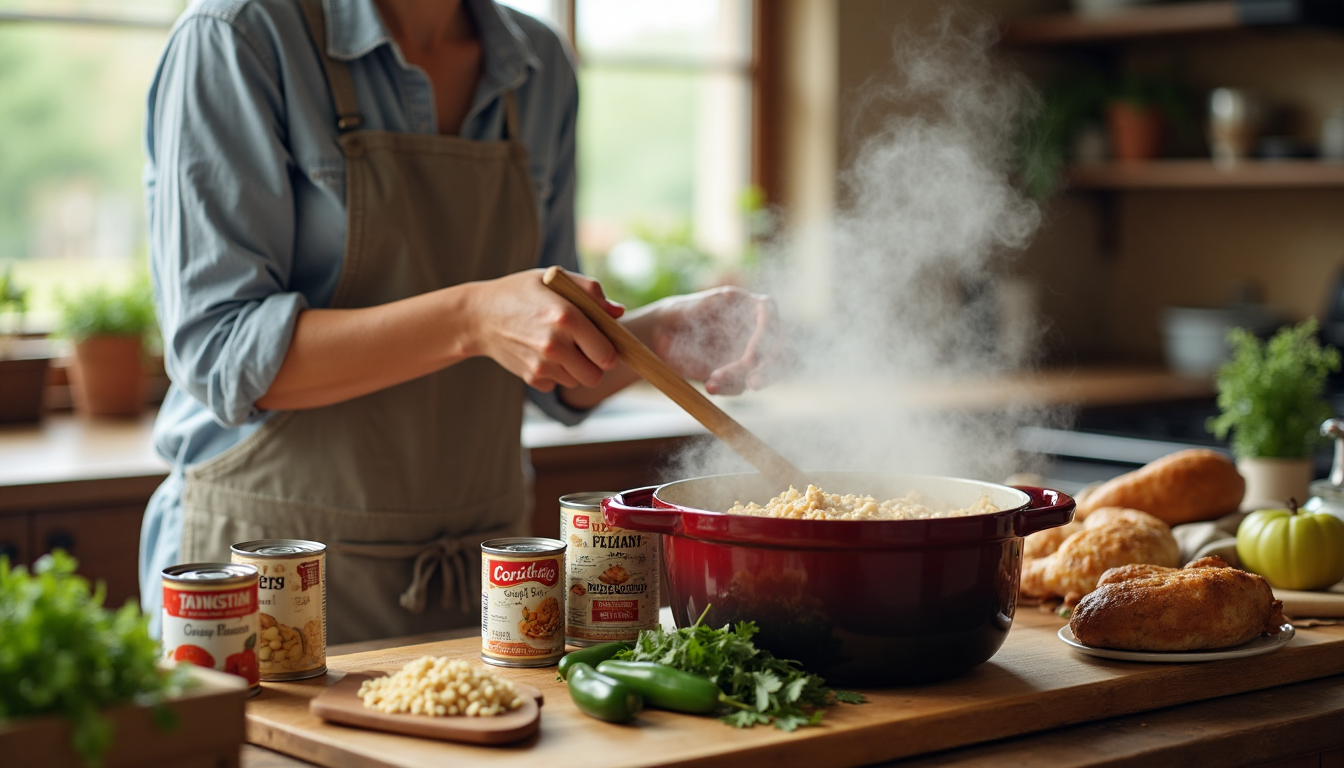Why I Stopped Following Chili Recipes (And Started Making Better Chili)

So I'm gonna be honest with you - I used to be that person who'd spend forty-five minutes at the grocery store because a recipe called for "Great Northern beans" and I was standing there googling whether cannellini beans were an acceptable substitute. (Spoiler alert: they absolutely are, and anyone who tells you otherwise is probably the same person who insists you need to sift flour for pancakes.)
But here's the thing about white chicken chili... it taught me that the best recipes aren't really recipes at all. They're more like frameworks. And once I figured that out? Game changer.
The Accidental Discovery
Last winter, I was having one of those weeks where my meal planning looked great on paper but reality had other plans. You know the drill - kid gets sick, work deadline hits, and suddenly it's Thursday and you're staring into the fridge like it might magically produce dinner.
I had a rotisserie chicken (because let's be real, rotisserie chicken is the MVP of busy weeknight cooking), some random cans of beans, and what I'm pretty sure was the last jalapeño in the continental United States that hadn't been turned into trendy hot sauce.
What I made that night wasn't exactly the white chicken chili recipe I'd bookmarked. It was... better. Because I'd accidentally stumbled into understanding WHY white chicken chili works, instead of just following someone else's exact measurements.
The Science Behind the Magic
Here's what I learned: white chicken chili is basically a master class in building layered flavors quickly. You've got your aromatics (onion, garlic, jalapeños) creating the base. Your protein and beans adding substance and different textures. And then - this is key - you're using milk instead of cream to create that velvety mouthfeel without making it so heavy you need a nap afterwards.
The flour isn't just there to thicken things up (though it does that). It's also preventing the milk from curdling when you add it to the hot soup. (See? Chemistry in action. My old software engineering brain loves this stuff.)
And that combination of fresh jalapeños and canned green chiles? Pure genius. Fresh jalapeños give you heat and brightness. Canned green chiles give you that deeper, smokier flavor without making you cry while you're chopping. It's like having a backup singer who makes the lead vocalist sound even better.
The "Whatever's in Your Fridge" Philosophy
But here's where most recipes fail you - they assume everyone has exactly the same ingredients available at exactly the same time. Reality check: sometimes the store is out of Great Northern beans. Sometimes you forgot to buy corn. Sometimes you realize halfway through cooking that you're out of cumin (and yes, this has definitely happened to me).
So instead of giving you another rigid recipe, let me give you the framework:
The Base: Some kind of onion (white, yellow, whatever), garlic, and something spicy (jalapeños, serranos, even crushed red pepper if that's what you've got)
The Protein: Rotisserie chicken is clutch here, but leftover grilled chicken works. Ground chicken or turkey? Absolutely. That random chicken breast you meal-prepped last Sunday? Perfect.
The Beans: Literally any white bean will work. Great Northern, cannellini, navy beans... even chickpeas if you're feeling rebellious. I've used a mix when I was cleaning out the pantry and it was fantastic.
The Liquid: Chicken stock plus milk is the classic combo, but I've used vegetable stock when that's what I had. Heavy cream if you're feeling indulgent. Even half-and-half works.
How to Actually Make This Thing
Start by heating some oil in whatever pot you've got. (I use olive oil, but honestly, any neutral oil works fine.) Throw in your diced onion and jalapeño. Cook them until the onion looks translucent - usually about five minutes, but don't stress if it takes a bit longer. Your stove might be different than mine.
Add the garlic and cook for another minute or two. You'll smell it when it's ready - that's your cue.
Now here's where it gets slightly technical: sprinkle in about 1/4 cup of flour. (All-purpose is fine. Don't overthink it.) Stir it around until everything's coated and cook it for another minute. This step is creating what's essentially a very loose roux, which is going to help thicken your soup and prevent the dairy from separating later.
Slowly pour in your chicken stock while stirring. (I learned this the hard way - if you dump it all in at once, you get lumps. Not the end of the world, but not ideal either.)
Add your chicken, beans, any vegetables you're using (corn, diced bell peppers, whatever), and your seasonings. Cumin and oregano are the classics, but I've added smoked paprika when I was feeling fancy. Let it simmer for about five minutes.
Then comes the milk. Pour it in slowly, stirring as you go. Let everything simmer together for another five minutes or so, just until it thickens up a bit.
Season with salt and pepper. Taste it. Adjust accordingly. (This is where you get to be the boss of your own dinner.)
When Things Go Sideways
Because they will. They always do.
Too thick? Add more stock or milk.
Too thin? Let it simmer a bit longer uncovered, or mix a tablespoon of cornstarch with cold water and stir that in.
Not enough heat? Throw in some hot sauce or crushed red pepper.
Too spicy? A dollop of sour cream or Greek yogurt when serving will cool things down.
Tastes a bit flat? You probably need more salt. Or a squeeze of lime juice. Sometimes both.
The Toppings Situation
This is where you get to have fun. I pile on diced avocado, shredded cheese, crushed tortilla chips, cilantro... whatever's around. My kids like it with just cheese and chips. My husband adds hot sauce to everything anyway. There's no wrong answer here.
Why This Actually Matters
Look, we're all just trying to get decent food on the table without losing our minds, right? And there's something really empowering about understanding how a recipe works instead of just following directions blindly.
Once you get comfortable with the basic formula here, you can start riffing. Add some butternut squash in the fall. Throw in leftover roasted vegetables. Use different beans. Experiment with spices.
I've made versions of this with black beans and cumin that were more Southwestern. I've added kale and white beans for something that felt almost Italian. I even made one with chickpeas and curry powder that was... actually pretty great, despite sounding weird.
The point is, once you stop being scared of deviating from the recipe, you start actually cooking. And that's when dinner stops being a chore and starts being something you actually look forward to.
So here's my challenge for you: make this chili, but make it yours. Use what you've got. Trust your instincts. If it needs more of something, add more. If it tastes good to you, then it's right.
And when someone asks for the recipe? Just send them this post and tell them to stop overthinking it. Because honestly, the best meals aren't the ones that follow someone else's rules perfectly - they're the ones that work for your life, your kitchen, and your Thursday night.
What shortcuts are you going to try? And more importantly, what are you going to add that I haven't thought of yet?




